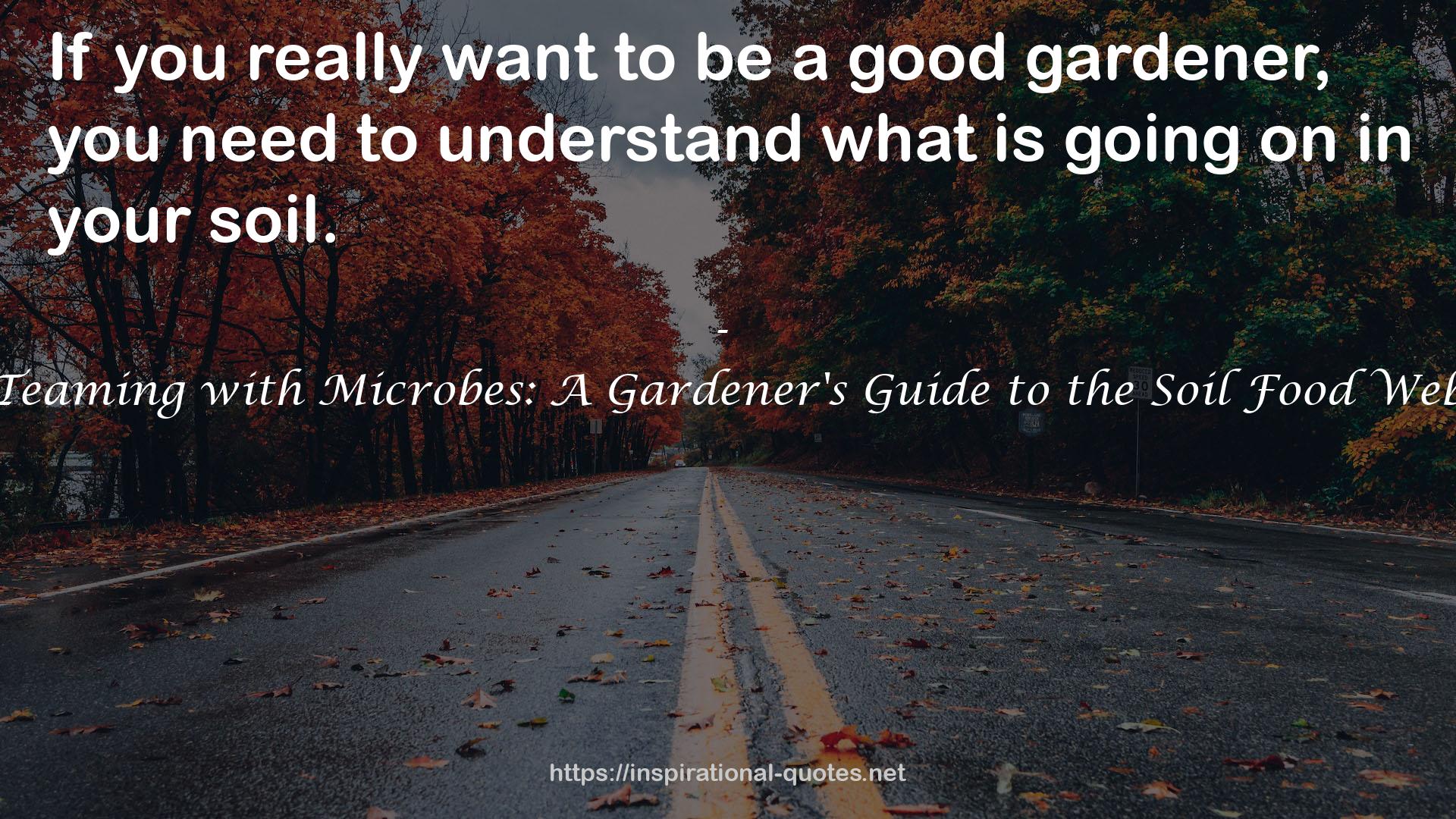2
" Bacteria are so small they need to stick to things or they will wash away; to attach themselves, they produce a slime, the secondary result of which is that individual soil particles are bound together. [...]
Fungal hyphae, too, travel through soil, sticking to them and binding them together, thread-like, into aggregates. [...]
The soil food web, then, in addition to providing nutrients to roots in the rhizosphere, also helps create soil structure: the activities of its members bind soil particles together even as they provide for the passage of air and water through the soil. [...]
The nets or webs fungi form around roots act as physical barriers to invasion and protect plants from pathogenic fungi and bacteria. Bacteria coat surfaces so thoroughly, there is no room for others to attach themselves. If something impacts these fungi or bacteria and their numbers drop or they disappear, the plant can easily be attacked. "
― , Teaming with Microbes: A Gardener's Guide to the Soil Food Web
6
" Chemical fertilizers, pesticides, insecticides, and fungicides affect the soil food web, toxic to some members, warding off others, and changing the environment. Important fungal and bacterial relationships don’t form when a plant can get free nutrients. When chemically fed, plants bypass the microbial-assisted method of obtaining nutrients, and microbial populations adjust accordingly. Trouble is, you have to keep adding chemical fertilizers and using “-icides,” because the right mix and diversity—the very foundation of the soil food web—has been altered. It makes sense that once the bacteria, fungi, nematodes, and protozoa are gone, other members of the food web disappear as well. Earthworms, for example, lacking food and irritated by the synthetic nitrates in soluble nitrogen fertilizers, move out. Since they are major shredders of organic material, their absence is a great loss. Without the activity and diversity of a healthy food web, you not only impact the nutrient system but all the other things a healthy soil food web brings. Soil structure deteriorates, watering can become problematic, pathogens and pests establish themselves and, worst of all, gardening becomes a lot more work than it needs to be. "
― , Teaming with Microbes: A Gardener's Guide to the Soil Food Web
9
" Sample your soils Good garden soil contains 30 to 50% sand, 30 to 50% silt, and 20 to 30% clay, with 5 to 10% organic matter. You can find out how close your soils come to this ideal, loam. All it takes is a quart jar, two cups of water, and a tablespoon of a water softener, such as Calgon liquid. You will also need soil from the top 12 inches (30 centimeters) of the areas you want tested, be it your vegetable garden, flower bed, or lawn. Mix each soil sample with two cups of water and a tablespoon of water softener. Put it in the jar, close the jar, and shake it vigorously, so that all the particles become suspended in the water. Then put the jar down and let things settle. After a couple of minutes, any sand particles in your soil will have settled out. It takes a few hours for the smallest silt particles to settle on top of this sand. Much of the smallest clay-sized particles will actually stay in suspension for up to a day. Organics in the soil will float to the top and remain there for an even longer period. Wait 24 hours and then measure the thickness of each of the layers with a ruler. To determine the percentages of each, divide the depth or thickness of each layer by the total depth of all three layers and then multiply the answer by 100. Once you know what percentages of each material are in your soil, you can begin to physically change it if need be. How to do this is discussed in the second half of the book. "
― , Teaming with Microbes: A Gardener's Guide to the Soil Food Web

